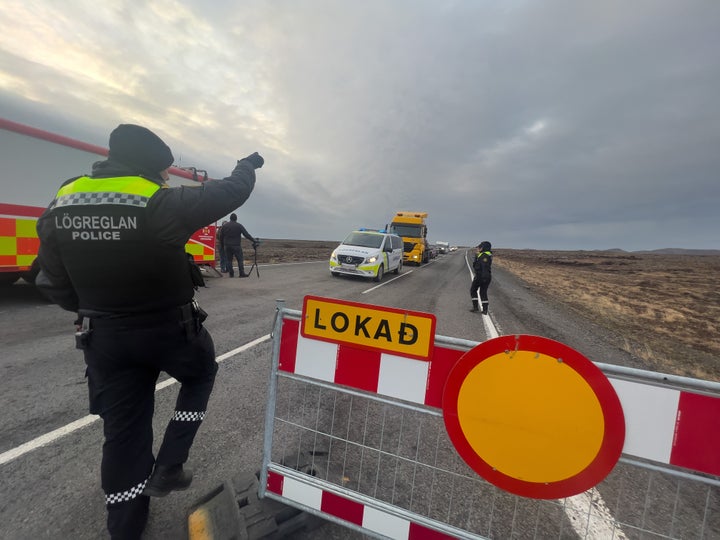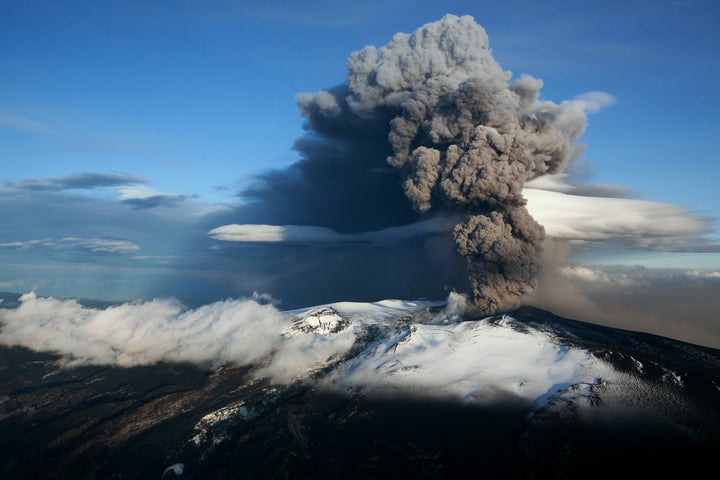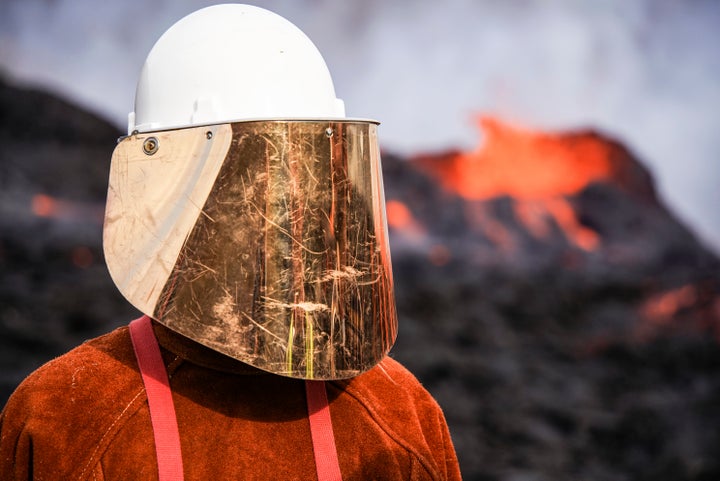Around 3,400 residents of a small Icelandic fishing village were ordered to evacuate earlier this month after the country’s meteorological officials warned of a “significant likelihood” of a volcanic eruption in the coming days.
Since then, the country has been on high alert and experiencing hundreds of earthquakes a day. Researchers say the probability of an eruption in the famously volcanic nation remains high.
So, what’s going on?
Icelandic officials have been monitoring increased seismic activity on the country’s Reykjanes Peninsula, along the southwestern coastline, since Oct. 24.
Grindavík, a small town, lies close to the center of the seismic activity, and officials ordered all residents to leave their homes last week as a precautionary measure until it subsides.
“At this stage, it is not possible to determine exactly whether and where magma might reach the surface,” officials said on Nov. 10. “There are indications that a considerable amount of magma is moving in an area extending from Sundhnjúkagígum in the north towards Grindavík.”
Significant likelihood of a volcanic eruption in the coming days. Models show a 15-km long magma intrusion, located just northwest of Grindavík. A hazard area has been defined based on the location of the dike, as shown in the map. https://t.co/9vYBBjNcX9 pic.twitter.com/m6SyMVkmer
— Veðurstofa Íslands / Icelandic Met Office (@Vedurstofan) November 11, 2023
When could the eruption happen?
Any day.
On Wednesday, Iceland’s Met Office said seismic activity had remained consistent since Nov. 11, and officials were still monitoring the region. The government noted, however, that it was impossible to predict when an eruption could happen and how close it would be to the town of Grindavík.
“Overall, the situation seems to be unchanged since yesterday,” meteorological officials said. “The probability of an eruption is still considered high.”
 Police direct traffic out of Grindavik on Nov. 14. For the second day, residents were allowed to collect personal belongings quickly.
Police direct traffic out of Grindavik on Nov. 14. For the second day, residents were allowed to collect personal belongings quickly.
Micah Garen via Getty Images
Will planes be impacted?
Probably not, but maybe. The Icelandic government said while disturbances to air travel can’t be ruled out, it was unlikely to be a repeat of the major eruption of the Eyjafjallajokull volcano in 2010. That event caused global disruption between Europe and North America after the eruption spewed a giant ash cloud into the air.
“While the possibility of air traffic disturbance cannot be entirely ruled out, scientists consider it an unlikely scenario,” the government said. “The potential disruption to flight traffic would depend on factors such as the location and size of the eruption. Typically, the impact of volcanic eruptions is confined to specific, localized areas.”
The officials added, “Notably, previous eruptions in the area did not impact flights to and from the country.”
 An eruption of the Eyjafjallajokull volcano in 2010 caused widespread disruptions to air travel. Officials said they don’t expect that to happen again, but said volcanic activity is unpredictable.
An eruption of the Eyjafjallajokull volcano in 2010 caused widespread disruptions to air travel. Officials said they don’t expect that to happen again, but said volcanic activity is unpredictable.
Etienne De Malglaive via Getty Images
Is Iceland worried?
The country has stressed officials are highly prepared for any eruption, noting Iceland is “no stranger to volcanic activity and experiences a volcanic event every five years, on average.”
The government said, “Three eruptions have occurred on the Reykjanes Peninsula in the last three years, none of which caused harm to people or disrupted air traffic. Icelandic authorities and the public are highly prepared for such events, and Iceland has one of the world’s most effective volcanic preparedness measures.”
 A person wears protective gear as they stand close to the lava flowing from Fagradalsfjall volcano in Iceland on Wednesday, Aug. 3, 2022.
A person wears protective gear as they stand close to the lava flowing from Fagradalsfjall volcano in Iceland on Wednesday, Aug. 3, 2022.
Marco Di Marco via Associated Press
>>> Read full article>>>
Copyright for syndicated content belongs to the linked Source : The Huffington Post – https://www.huffpost.com/entry/iceland-volcano-seismic-activity_n_6555aaf3e4b0e4767012d462































